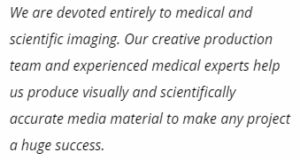Today we are giving you a glimpse of our work dedicated to one of the widespread women illnesses – fibrocystic breast changes or fibrocystic mastopathy. This colorful and vivid animation gives you an overview of the problem. You can find an elaborated description of the above video below.
What is fibrocystic mastopathy
Hormonal imbalance in female leads to the disease called fibrocystic mastopathy. It is characterized by dissimilar proliferation of breast connective tissue, forming tiny cysts and ducts. Commonly, it is a bilateral process, but may be unequal on either breast.
Fibrocystic breast changes defined by a bust pain, cysts, and breast masses. “lumpy” or “doughy” are the main description of this state. Symptom worsening is observed over definite periods of the menstrual cycle. Luckily, fibrocystic mastopathy is benign and cannot be categorized as cancer.
11 main factors that lead to mastopathy:
- Dysfunction of the reproductive system
- Sexual activity disarrays and psychological conditions (stress and depression)
- Hormonal and metabolic changes
- Gynecological diseases and events (inflammations, abortions, late pregnancy, short breastfeeding period, etc.)
- Other chronic illnesses (thyroid gland, liver, gallbladder diseases, diabetes, obesity)
- Hereditary factors
- Lifestyle factors (alcohol consumption, smoking)
- Fibrocystic mastopathy common signs and symptoms
- Breast pain that often begins before the menstrual cycle or can be permanent
- Nodules, proliferation, and cysts in the breast
- Fluid oozing from the nipples (colorless to dark green)
Pathophysiology
The precise mechanism of the ailment is yet to be fully understood, but it is surely connected with hormone levels, as it generally happens after menopause and is also related to the menstrual cycle.
Fibrocystic mastopathy is a state, somewhat rooted to the normal hormonal variation throughout a woman’s monthly cycle. Estrogen, progesterone, and prolactin are the most significant physiologically active substances in this process.
They control the breast tissues by stimulating cells to grow and multiply. Repeated over the years, fluctuations of these hormones lead to the creation of tiny cysts and zones of fibrotic tissue. Such changes cause pain and uncomfortable breast feelings that usually become prominent when a woman hits her 30s.
Epidemiology
Fibrocystic mastopathy occurs in 50-70% of women according to literature. The disease is most usual among women between 30 and 50 years of age.




The post Fibrocystic mastopathy MOD animation appeared first on Nanobot Medical Animation Studio.






